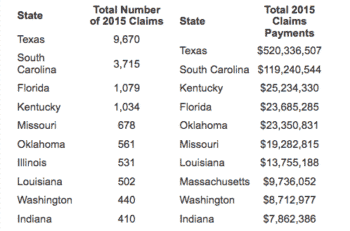Adding Cofferdams to Your Flood Mitigation Strategies
Flooding affects more homeowners than and other natural disaster, according to FEMA. As of 2015, the average claim for damage caused by a flood was over $46.000. Flood mitigation strategies are necessary for those who wish to protect their home.

How Can I Protect My Home?
There are many steps you can take as a homeowner to protect yourself from a possible flood scenario. The first step you may want to take is to perform a risk assessment. FEMA offers a one step flood risk profile. You should also have contingency plans in place for dealing with communication during an emergency, as well as having an emergency kit on-hand. Unfortunately, most homeowners insurance does not actually cover damage from floods.
If you live in a high flood risk area, here are a few tips to help minimize the impact of a flood on your home:
- Ensure that your basement walls have been completely waterproofed
- Use “check valves.” These valves stop the reverse flow of water and will help to stop flood water from backing up into your home’s drains
- Elevate your furnace, electric panel (circuit breaker,) and your water heater off of the ground to a reasonable level that you are able to accommodate
- If you are in a particularly flood-prone area, you may even consider raising the outlets to the mid-level of the walls in your home
- Construct barriers around your home to keep flood waters out
Let’s examine this last one a bit. Traditionally, flood barriers have come in the form of sandbags, or a more expensive option, permanent flood barriers (typically permanent fixtures made from metal.) Sandbags can prove to be problematic however, as they are incredibly susceptible to water seepage. Sandbags also are prone to contamination from possibly dangerous materials found in flood water. There is also the problem of figuring out what to do with the used sandbags. For these reasons, sandbags may not be the best solution to protect your home.
Another option to consider are water filled dams. They are stronger and more sturdy than sandbags (which may fail, or even be washed away,) and do not require the installation of any permanent fixtures. As far as home protection, they offer some advantages over traditional sandbags:
- They use on site water to fill the inner-tubes of the dam, creating a water-tight barrier that will not seep, or wash away
- Re-usable
- Non-invasive / Little to no environmental impact
- Strength – Water filled dams are much stronger and more stable than sandbags
- Extensible – Water filled dams can be arranged in any configuration, from square and rectangular, to round or triangular. For many homeowners, a flood contingency plan including a water filled dam around the perimeter of their home may be the level of protection that they require. What are your home protection plans? Do you have flood mitigation strategies in place?

